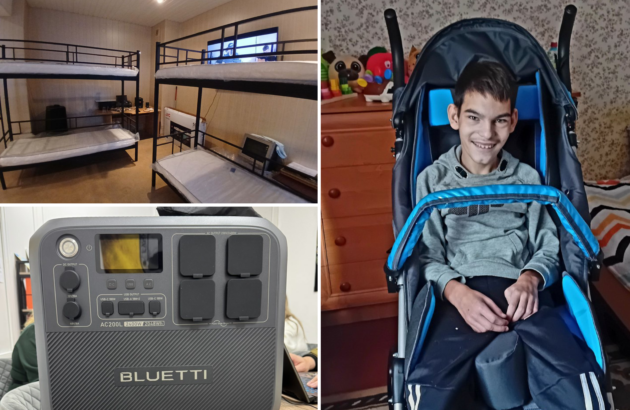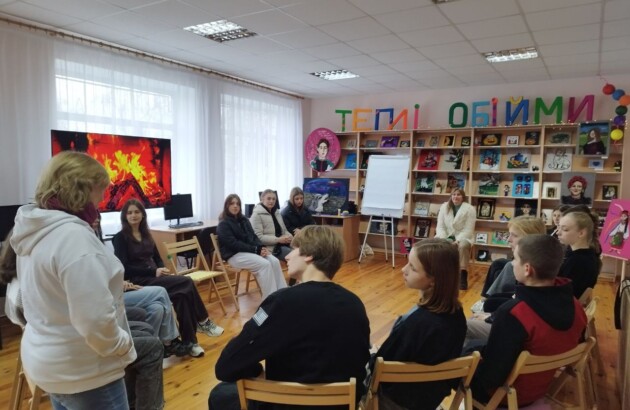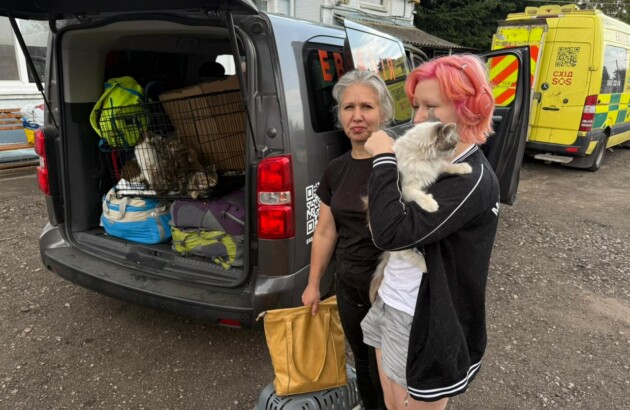A Trail of Death and Destruction: Russian War Crimes, Human Rights Violations and the Evolving Needs in Ukraine
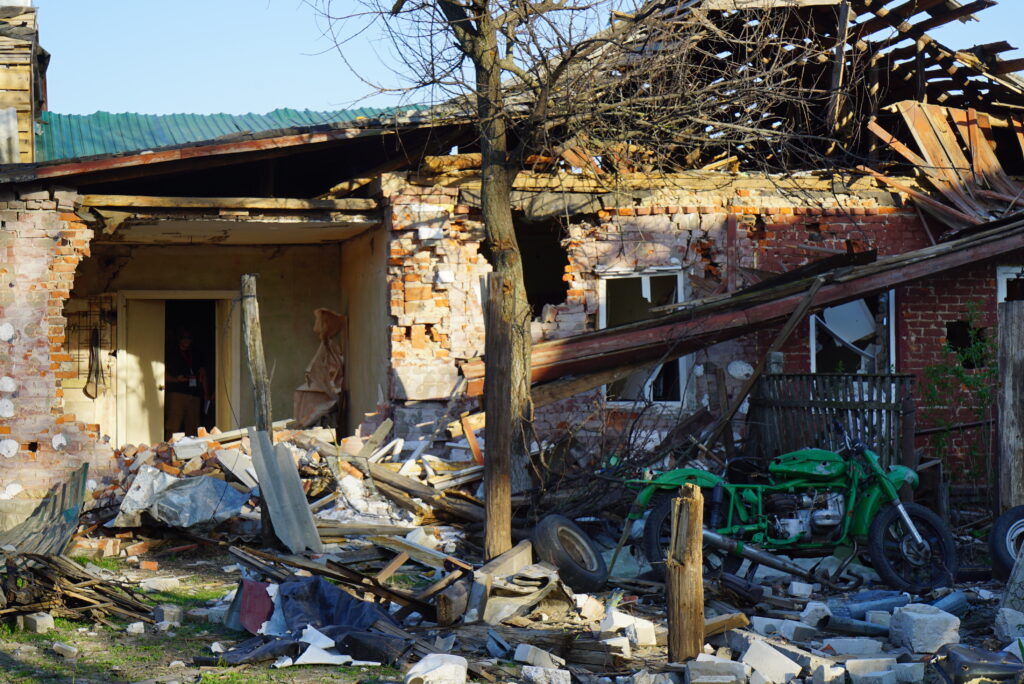
Report based on the findings of the international VOSTOK SOS/ DRA human rights mission to Ukrain.
Since the beginning of the full-scale military invasion of Ukraine on February 24, the Russian Federation has continuously and systemically violated international law and human rights. Shelling and aerial bombing of civilian targets, using banned ammunition such as cluster bombs, assaults on evacuation convoys, medical institutions, and medical vehicles – the list of violations is long and grow ing. Occupation, captivity, arbitrary killings, systemic rape, torture, shelling, and bombing have killed and injured thousands and traumatized millions.
Moreover, it has caused heavy damage to civilian infra structure, including hospitals, schools, administrative buildings, bridges, and private houses. 14 million people have been forced to flee their homes, with 8 million in ternally displaced persons and 6,7 million seeking refuge abroad.
The Ukrainian charitable organization, Vostok-SOS, and the German NGO DRA conducted a monitoring mission between May 3 and 12, 2022. An international team with members from Ukraine, Germany, France, and the Czech Republic including a member from the German/Swiss Human Rights Organisation Libereco Partnership for Hu man Rights monitored human rights violations, violations of international law, and consequent local humanitarian problems and needs in the Chernihiv, Kyiv, and Sumy re gions.
Russian armed forces withdrew from these regions in late March 2022, leaving a trail of death and destruc tion. Consequently, inhabitants and local authorities are facing challenges, including a dire humanitarian situa tion, the need to reconstruct thousands of homes and significant infrastructure, and recovery. The mission also monitored the situation with internally displaced people (IDPs) in the Zakarpattia region, where high numbers of IDPs are straining local capacities and infrastructure.
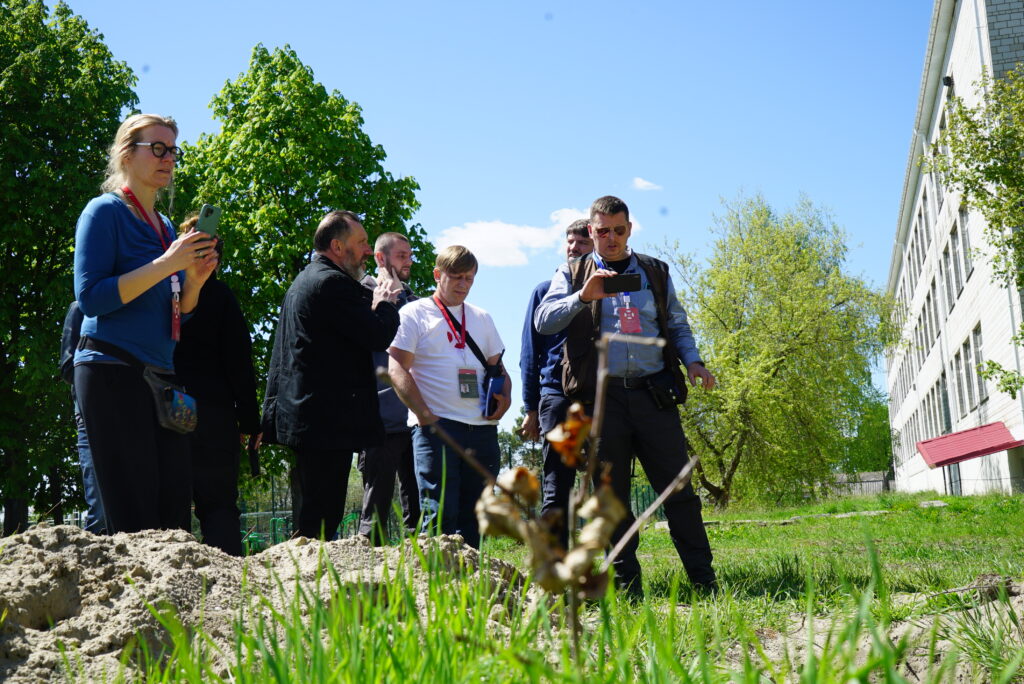
Needs assessment and recommendations: mitigating the consequences of the Russian invasion
The primary tasks in heavily destroyed villages and towns are demining, reconstruction of housing and critical infrastructure, and maintaining public health. In regions with many IDPs, the maintenance and enlargement of infrastructure and the care of the IDPs is also necessary. Therefore, Ukraine needs humanitarian aid, demining and construction assistance, medical and psycho-social support, and economic investment. Moreover, interna tional support in the criminal persecution of war criminals is necessary.
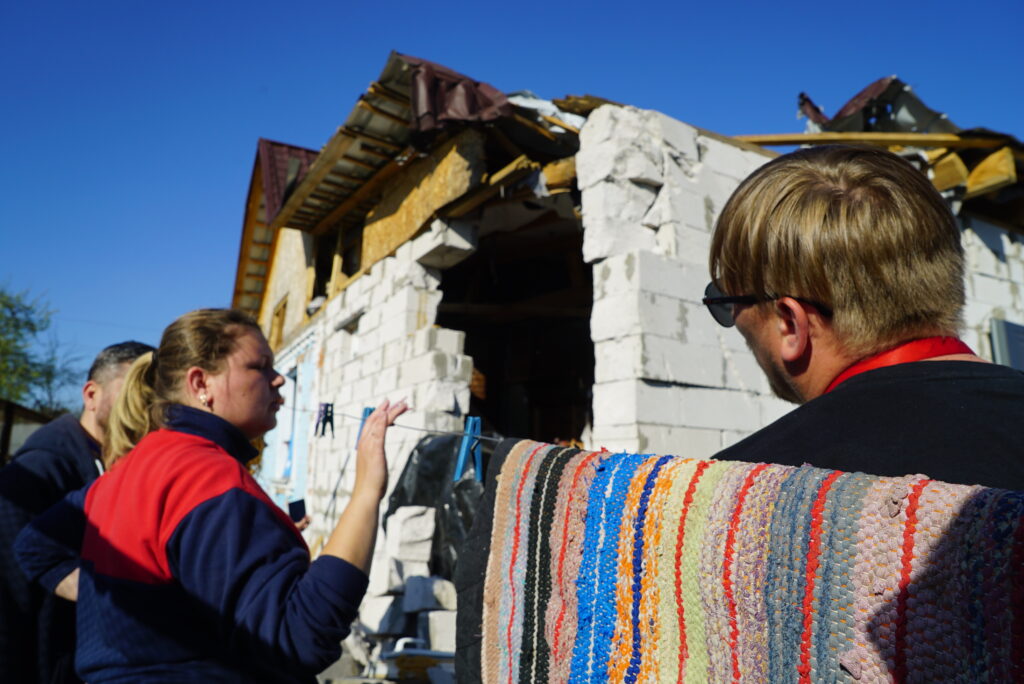
Landmines
Anti-personnel, anti-vehicle mines, and unexploded ammunition threaten the physical integrity and the lives of millions of people in the combat-affected and formerly occupied territories of Ukraine. As the mined areas are not mapped, it will take years to find and remove all of them. Mine contamination makes it unsafe for people to return to their daily life. Only recently, a car hit a land mine when driving in the forest to fetch wood in the Kyiv region. Mining also constitutes an obstacle to reconstruc tion efforts and hampers international investment in construction.
Mine-affected areas need assistance in demining and the support of mine-awareness training for the population. In many regions of Ukraine, landmines severely limit access to nature. Rehabilitative residencies in non-mined parts of Ukraine and other countries are helpful for people as access to nature is an essential means of maintaining health.
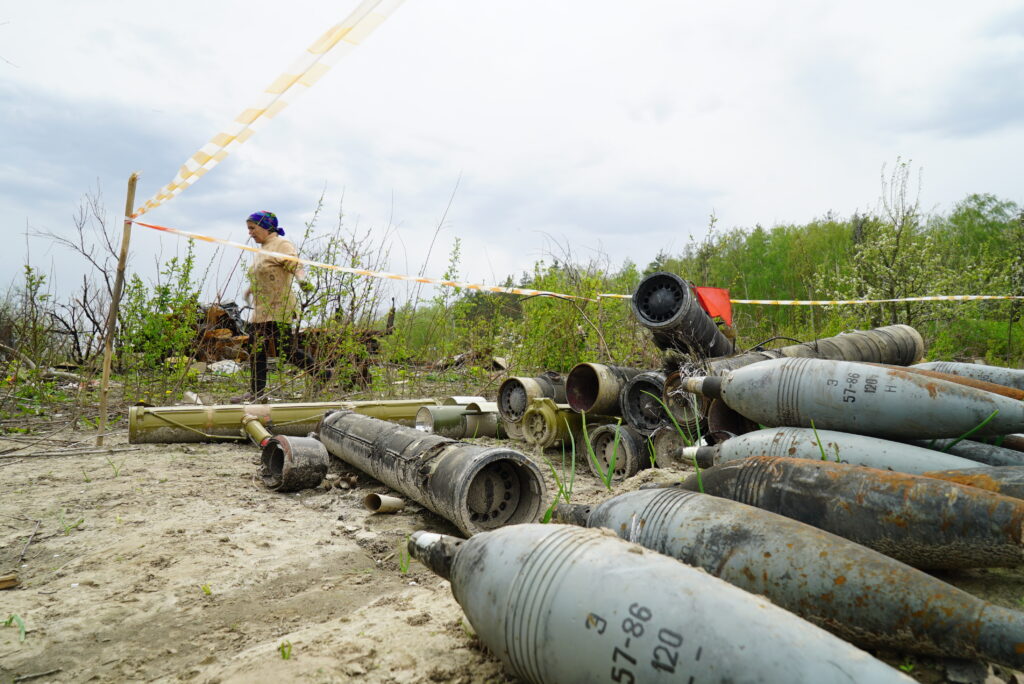
Accommodation
Accommodating people who have lost their homes is another major challenge for the Ukrainian government on every level. In combat-affected regions, the regional administration does not offer temporary accommodation in kindergartens or schools as they fear that places where people are concentrated could become targets of aerial bombing. So far, many homeless people have relied on their private networks, staying with neighbors, relatives, or renting a flat.
In regions with many IDPs, like Zakarpattia, housing for IDPs is a problem consistently raised.. As the situation was an emergency, the sheltering of IDPs was organized in an improvised, short-term-oriented matter. Thus, it is now necessary to come up with longer-term solutions. The is sue is pressing as the schools and kindergartens currently serving as shelters are supposed to return to their usual function on September 1, 2022. In the Kolchis’ka commu nity, the local club is the only available place to shelter IDPs when schools start working, but it does not have a canteen. Moreover, local communities lack the funds to provide shelter and nutrition.
All affected municipalities are currently considering housing solutions for IDPs and people who have lost their homes to shelling or aerial bombing. Some are thinking about providing accommodation containers or building prefab houses. The head of Kholmkivs’ka municipality, Tetiana Vachylia, plans to sign a memorandum with a British fund to construct a village of prefab houses for 500 people. The project is attractive as the location offers workplaces in factories located on the community’s territory.
Regional authorities are concerned that settlements of containers or prefab houses could become ghettos, so they prioritize permanent housing. They suggest acquir ing available apartments until new houses are ready for occupancy. Zakarpattia regional administration’s deputy head, Petro Dobromilskyi, states that these new-build houses could be used even after the IDPs have returned home. However, the Zakarpattia administration estimates that about 200,000 IDPs will likely stay.
In the meantime, the local communities are trying to solve the most urgent accommodation problems. In Bobrovytsa, north-east of Chernihiv, the homeless stay in the hospital, while in Trostyanets, former residents of destroyed buildings around the railway station now live on the premises of the chocolate factory.
Regarding the need for accommodation, support from and collaboration with the international community is necessary. All local officials signalized openness and gratitude for any contact that would help them mitigate the housing problem.
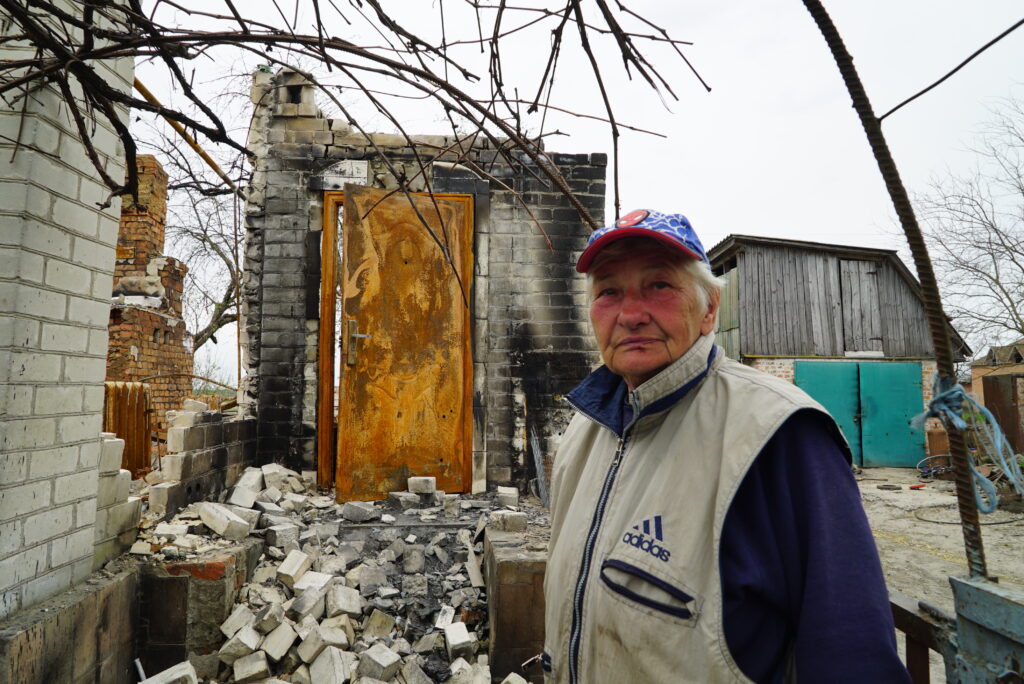
Humanitarian aid
Although in many communities, the first critical phase of a dire humanitarian situation has come to an end, human itarian aid is still very much needed. Some international organizations that provided emergency aid in the first months have stopped, and private donations are decreas ing. Many Ukrainian organizations and initiatives currently lack humanitarian cargo. The responsible people in the regional administrations of Chernihiv and Sumy stress that while people are not starving, humanitarian aid is still needed. Also, in places with many IDPs, demand exceeds supply. Zakarpattia local and regional adminis tration officials identified food, clothing, hygiene prod ucts, and medicine as the main demands. Tetiana Vachyla, chairwoman of the Kholmkivs’ka community council, says she buys medicine privately because she is not allowed to use community funds for this purpose, as the government has imposed limitations on wartime purchases.
Ukrainian volunteers play a crucial role in the care of IDPs. The monitoring team met with the volunteer group, Sila Ouzhhoroda (The Strength of Uzhgorod), who have pro vided food assistance and, on a smaller scale, medical aid, non-food items, and shelter to IDPs at Uzhgorod’s railway station since February. Whereas in the first weeks, 10,000 to 15,000 IDPs arrived at Uzhgorod, by May the number had decreased to 2,000/3,000.9 The initiative has nearly 200 volunteers with various socio-professional profiles, 150 of whom have themselves fled the war from the Kharkiv, Kyiv, or Luhansk regions. Sila Uzhhoroda benefits from multiple forms of support (churches, local entre preneurs, Ukrainian diaspora, international humanitarian NGOs) and is one example of many volunteer networks throughout Ukraine.
These volunteer networks risk disappearing due to a lack of resources. Thus, international organizations must coop erate with local initiatives to keep the volunteer support of people in need alive.
In general, the provision and sponsorship of humanitar ian assistance is still a task for the international commu nity. Systematic and long-term assistance programs are much needed.
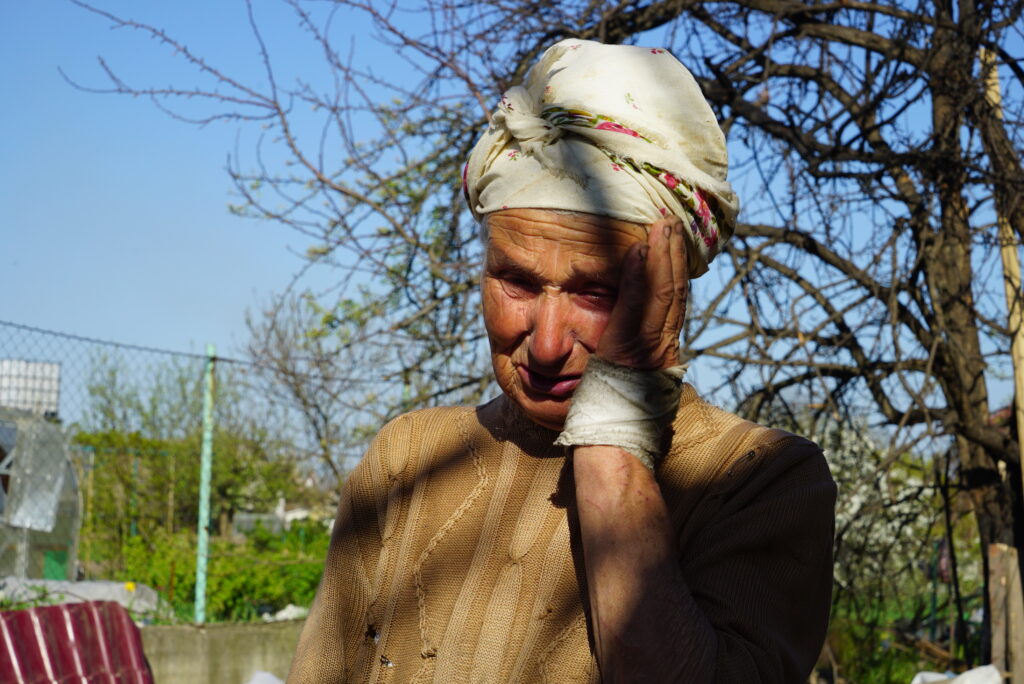
Medical aid
As the Russian army did not spare medical institutions from shelling, medical infrastructure was heavily dam aged. The before-mentioned hospital in Trostyanets is one such example. The reconstruction of medical facilities, including the purchase of costly medical equip ment, is an urgent task. Medical facilities need donors and partners who will help them reestablish functioning wards and high-standard medical care. The transport of medical aid, including medicine and other medical and rehabilitation equipment, is needed throughout Ukraine. Particularly hospitals of secondary care that treat people brought from the combat-affected areas in the East require significant support.
In the regions with many IDPs, polyclinics and hospitals need to increase their capacities to cope with the increased number of patients.
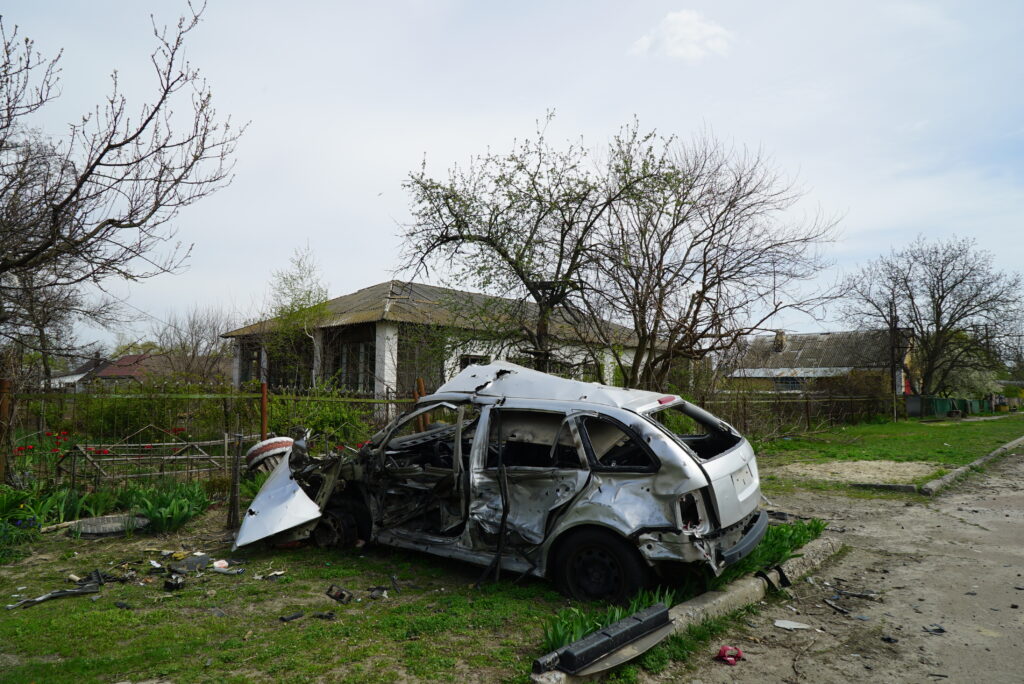
Reconstruction: private housing, public buildings, and civil infrastructure
The destruction of civilian infrastructure and facilities as a consequence of combat or Russian military presence has not been fully assessed yet. However, the scale of the damage is enormous. According to estimates for the Chernihiv region, 3500 buildings have been destroyed, 80% of which are civilian homes.
In Okhtyrka, aerial bombing on March 3, 2022, almost wholly destroyed the thermal power plant. If not rebuilt swiftly, this may leave a large part of the town without heating and hot water in the coming fall and winter. Moreover, reconstructing factories and power plants is necessary to provide people with employment and rebuild supply chains and the national economy. In this realm, construction material, the financing of construc tion work, and internationally supported construction projects are necessary. The construction industries of EU countries should be motivated to engage and invest in Ukraine. Local communities signalled their openness to any offer of international assistance or cooperation.
Many bridges have been blown up or shelled, severely limiting mobility and accessibility, sometimes causing detours of more than two hours, as when traveling from Chernihiv to Kyiv (as of May 2022). In some places, ponton bridges enable crossing; however, they are not passable for heavy vehicles.
In regions like Sumy and Chernihiv, tens of thousands of Russian tanks and other armored vehicles destroyed the pavement on the main roads. Railroad networks are also a target of aerial shelling and need repair.
Construction material and financial support for construc tion work are needed to facilitate the reestablishment of mobility, accessibility, and supply chains for food and other crucial items.
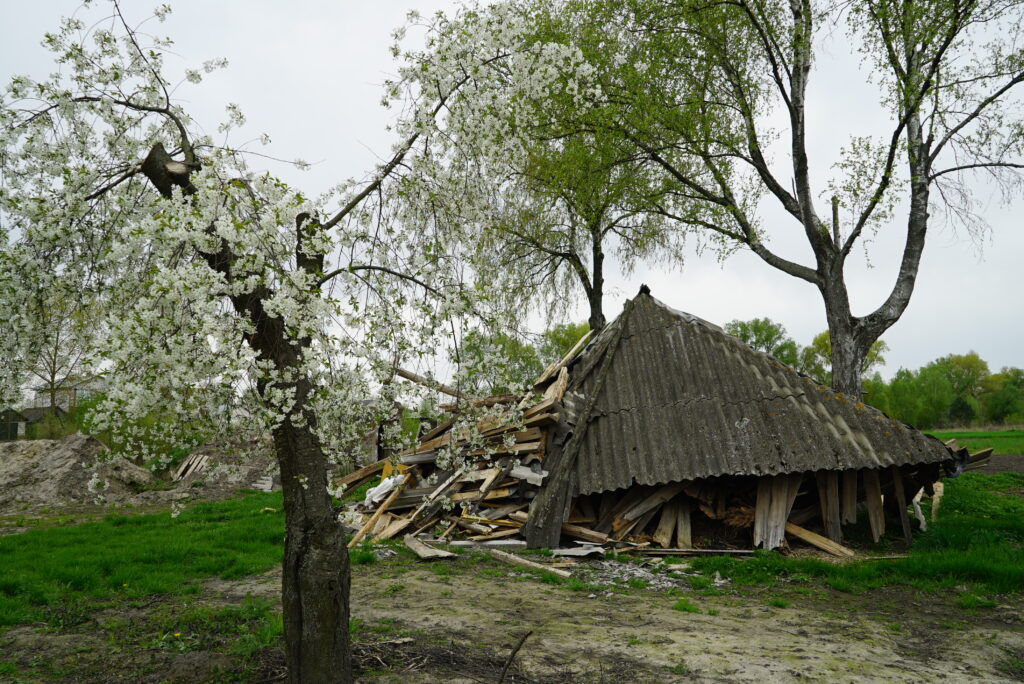
Obstacles to rebuilding
Private people have a great interest in rebuilding their damaged houses. However, they often lack the funds and human resources to do so. The Ukrainian State pays financial compensation in case of the destruction of a home through shelling. But due to the vast amount of applications, the evaluation and payment process is slow. That constitutes two problems – first, people wait for their compensation for weeks and months, and second, they cannot start to clear rubble and rebuild if they have their own resources because the evaluation commission deciding on the compensation needs to see the damage in the original condition. After the commission’s visit, they need to wait for the delivery of a written report that enti tles them to receive compensation. Only then can people start rebuilding.
In north-eastern Ukraine, people affected by shelling expressed doubts about whether the state would support construction work soon as territories might still be af fected by aerial bombing. Recent reintensifying of bomb ing in Sumy and regions seems to confirm the legitimacy of such concerns. For example, the town of Okhtyrka (Sumy region) was again shelled on May 17, 2022, a month and a half after the withdrawal of the Russian army, caus ing injuries to at least five people and material damage.10 According to Dmytro Zhyvytskyi, head of the Sumy re gional administration, Ukrainian border guards have been under regular mortar fire on the Ukrainian-Russian border since mid-April.
That fact that many residents who fled Russian occupa tion have not yet returned to their homes constitutes another obstacle to rebuilding. Officials of the Sumy administration encourage residents to return to restart economic activities and facilitate the rebuilding of the region. However, they warn of the risks: shelling and provocations on the border with Russia, ongoing mine clearance, and explosive remnants of war.
Chernihiv administration officials are more cautious and recommend waiting until the security situation stabi lizes, and the restoration of the water, gas, and electricity services are finalized. This work is well underway in the various villages and towns the mission visited: in Yahidne and Ivanivka, gas, water, electricity, and internet connec tivity supplies were available in early May 2022. Demining work is also underway, visible by the yellow marks left by the deminers on the gates of the houses.
Refugees and IDPs from Chernihiv city, where almost 70% of the city’s 256,000 residents had left, are already return ing. The same trend is visible in Sumy and Kyiv regions.

Administrations, schools, centers of culture
In the occupied territories, systematic looting or shelling deprived the local administrations of their computers, notebooks, printers, and other items necessary to run a local administration, a court, a police station, or a procu rator’s office. Schools and cultural centers have lost their technical devices and many more things to looting. Com munities lost their busses, school buses, and ambulances due to shelling or looting.
Donations of funds, vehicles, or technical devices are needed very much. Partnerships between schools, villages, or towns that support the local civil society con stitute the most sustainable and effective support as they involve personal relationships, regular contact, expertise in what is needed and where, and possibility of capaci ty-building.
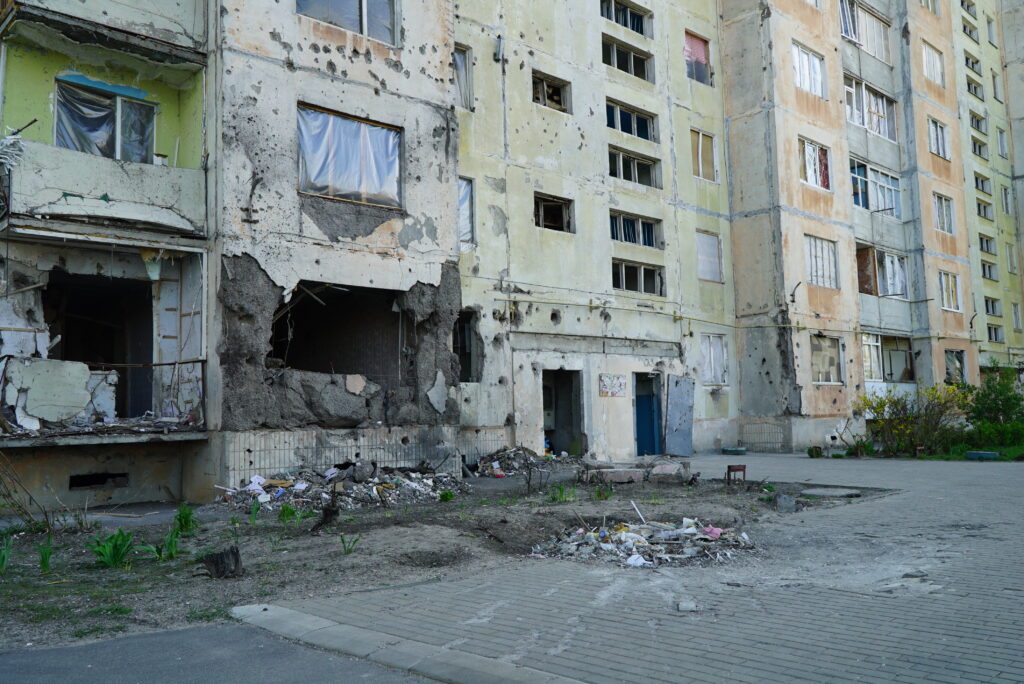
Infrastructural needs in the Zakarpattia region
Apart from the housing issues described above, the significant increase in residents due to the influx of IDPs is causing infrastructural needs. Dmytro Myroshnikov, dep uty head of the Zakarpattia region, identifies the problem of waste processing as particularly pressing in the city of Uzhhorod, where almost 1/3 of the IDPs in Zakarpattia live. Representatives of the regional administration asked for the international community’s help with waste com pacting lines and recycling.
Finally, the sewage systems in different cities, especially in Uzhhorod, are overwhelmed by the increased number of people and need modernization. The regional adminis tration estimates the modernization costs to be 40 million euros and is looking for a donor.
Another problem is domestic animals brought in large numbers by IDPs. Shelters, veterinarians, and neutering services are overwhelmed by the number of requests for care.
Last but not least, IDPs in the Zakarpattia region need employment to secure their livelihoods, therefore job opportunities need to be created. The administration en courages companies to relocate production to the region.
Mental health and psycho-social support
The psycho-social after-effects of traumatic experiences are enormous. Even though people in Ukraine show re markable resilience on many levels, psycho-social support is much needed. The shelling and shooting of civilians, torture, and rape have left deep wounds in the affected people, communities, and society. Loss of all material belongings, evacuation, and family separation add to the hardships people in Ukraine are currently experiencing. On a large scale, people experience trauma symptoms such as nightmares, flashbacks, anxiety, aggression, and the inability to connect with others. Psychotraumatiza tion contributes to polarization, hardened group per ceptions, and conflict. Resources like meeting family and friends or going out to nature are often not available due to warfare and mind contamination. Many people do not even understand why they feel the way they feel and still experience anxiety and stress, although the acute situation of artillery shelling or occupation has passed. In Yahidne, for example, where about 350 civilians were trapped for 28 days in the school’s basement, resident Halyna shared her concerns about her niece and her pre-teen daughter, both of whom are afraid to leave their homes and react with panic to unexpected sounds.
Not only people affected by shelling, occupation, and IDPs require psycho-social support, but also volunteers and helpers. Numerous individuals are involved in the crisis response. Ukrainian volunteers support evacuations, distribute humanitarian aid, document human rights violations, support IDPs, and more. Many of the volun teers are either living in combat-affected areas or are themselves IDPs who have abandoned their homes, many of them not for the first time. Their sound mental health is crucial for saving lives and mitigating harm.
Psychological approaches suitable for treating trauma are not widespread in Ukraine. Methods based on psycho analysis or cognitive-behavioral therapy show limited results in treating psycho-trauma and can even harm the beneficiary. Thus, training psychologists, psychothera pists, social workers, and volunteers who support war-af fected people is necessary. To overcome overwhelming experiences, integrate traumatic memories, and restore the functioning of the nervous system, people need individual trauma therapy, trauma-informed peer support, and access to resources such as nature or spaces they perceive as (relatively) safe. Special attention needs to be given to traumatized children and teenagers. Rehabilitative residencies for individuals and families in less combat-affected areas of Ukraine or in other countries have proven very effective in mitigating stress and trauma. Moreover, war-affected people need access to information about psycho-trauma and trauma-informed approaches to stress management and stabilization.
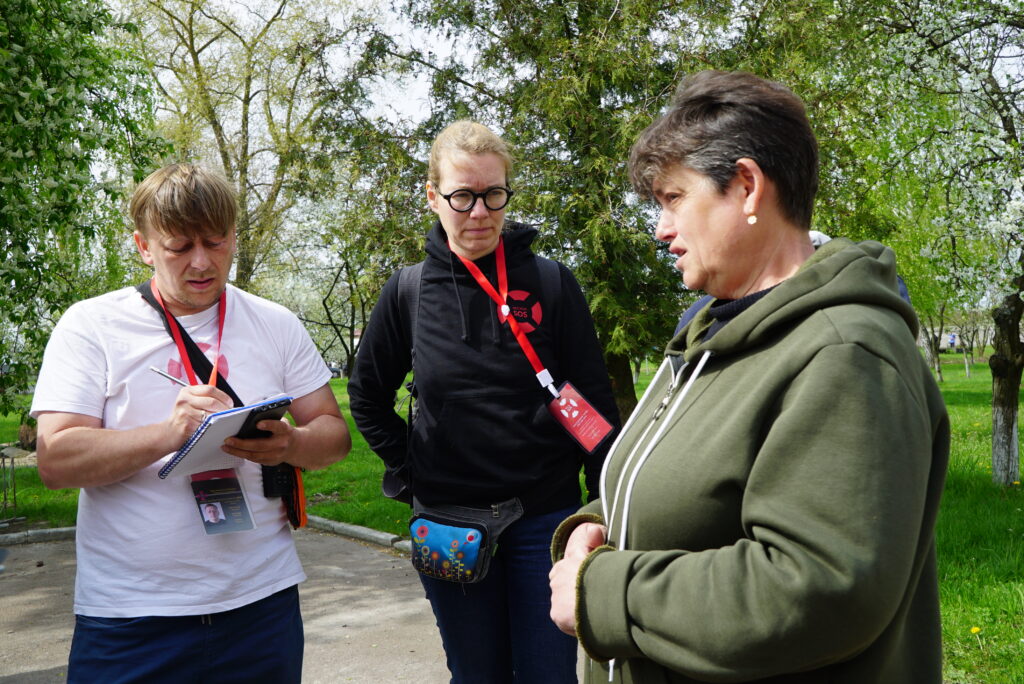
Keeping up resilience, initiative and agility
In these traumatic circumstances, the resilience of Ukrain ians in the face of war is impressive. During the mission, the team saw countless civilians occupied with cleaning or repairing looted or damaged premises or sowing seeds in their vegetable gardens. In short, actively improving the situation and at the same time providing a sense of normality to their daily lives. The medical staff of Trost yanets hospital have already cleared, cleaned, and put in order several floors of the building and hope to be able to welcome the first patients in June. The same goes for the classrooms in the schools of Katyuzhanka (Kyiv region) and Kolychivka (Chernihiv region). In the latter village, the locals told us that after the deminers had passed through, they had picked up the metal debris with a magnet so they could finally put their hands into the earth and sow potatoes.
Agility, initiative, and resilience need to be maintained. Active civilians need support to spread their activity and mobilize others. Psycho-social support, resources, aid, and facilitating positive social contact – including with people from other countries – are crucial.
Providing support for the documentation and prosecution of war crimes
In the Sumy and the Chernihiv region, the regional prosecutors and other law enforcement agencies have established teams of investigators to take witness accounts of war crimes and document the destruction of civilian infrastructure by aerial bombing and shelling. Local authorities record the destruction and damage of private property and issue official documents for the owners. Many Ukrainian and international human rights organizations are contributing to the documentation of war crimes and human rights violations.
The deployment of international investigators, training for Ukrainian investigators on international humanitarian law, facilitation of good communication between prosecutors and regional human rights organizations, and technical help can support the prosecution of war crimes and human rights violations.
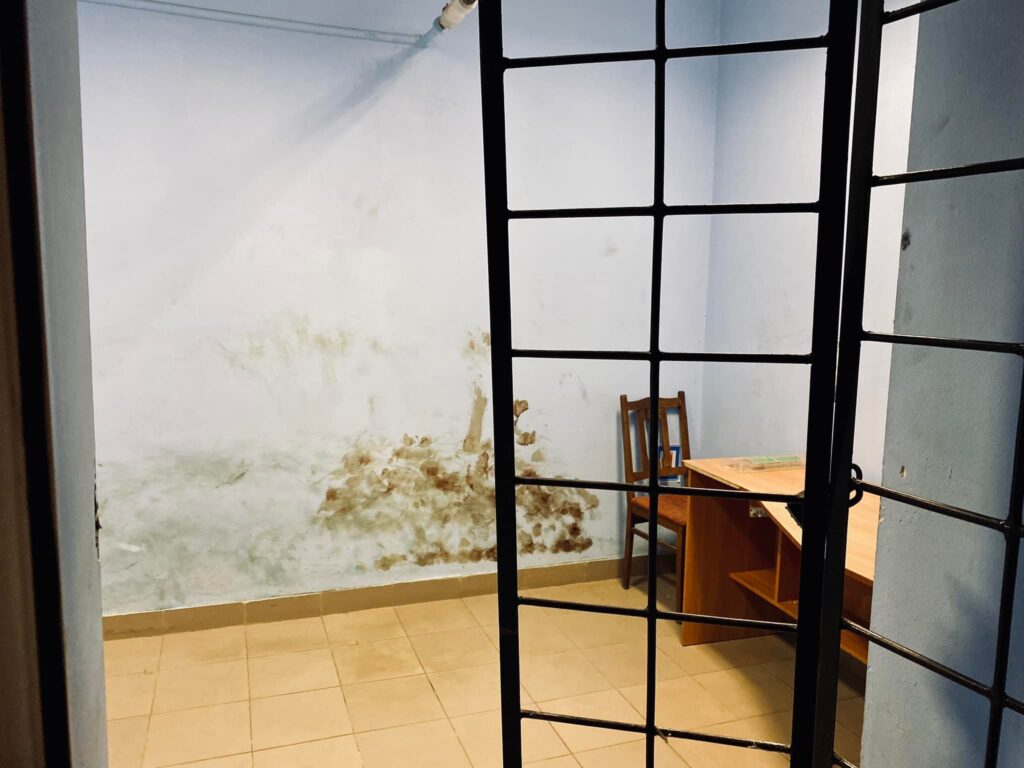
Read PDF in English and Ukrainian.
